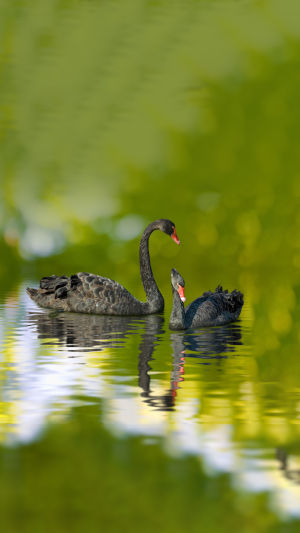Until Australia was discovered in the 17th century, Europeans thought that the swans in the world were flawless white swans, while black swans did not exist.
So when an expedition led by Dutch explorer William Willem de Vlamingh first discovered black swans in Perth (Swan Lake) in western Australia in 1697, they were shocked.
As a result, people began to call unusual and unpredictable events the "Black Swan event".
"Black Swan" events are events with low probability and huge impact, which are very difficult to predict, and the impact is unusual, usually causing a chain of negative reactions or even bumps.
In general, the "Black Swan" event has three characteristics:
1. The probability is a small, intentional externality.
2. The impact is significant.
3. It is considered to be explainable and predictable afterward.
Such incidents also exist in various fields, including politics, the economy, and individuals.
Wild black swans are found in wetlands in southwestern and eastern Australia and adjacent coastal islands.
They like to inhabit waters such as coasts, bays, and lakes, and occasionally live on flooded pastures and tidal mudflats.
And the sea near the island or coast.
Because black swans have strong fecundity, easy to raise, and have high ornamental and economic value, many parts of the world, such as Europe, New Zealand, Japan, and China, have introduced a large number of black swans as ornamental waterfowl.
The newborn black swan has taupe feathers and nearly pale edges. The black swan adult bird is black-gray or grayish brown, but its belly is grayish white and its feathers are white.
When black swans sense danger and spread their wings to indicate an attack, they can see their white feathers.
Many people think that swans should be white, but the appearance of black swans breaks people's perception.
So what's the difference between black swans and white swans except for their different colors?
Both swans are monogamous, and they usually accompany for life and have a sense of their own territory.
They also choose to mate in separate pairs, occasionally in groups, and swans will attack the invaders if they are angry.
If the enemy can't swim, they will severely drag the enemy into the water and suffocate the enemy.
So swans are not easy to mess with.
It is easier for a black swan to choose a mate than a white swan.
A white swan will choose a mate carefully, usually after a long time, and the black swan will find the next mate immediately after bereavement.
So this also ensures that the number of black swans has not decreased.





